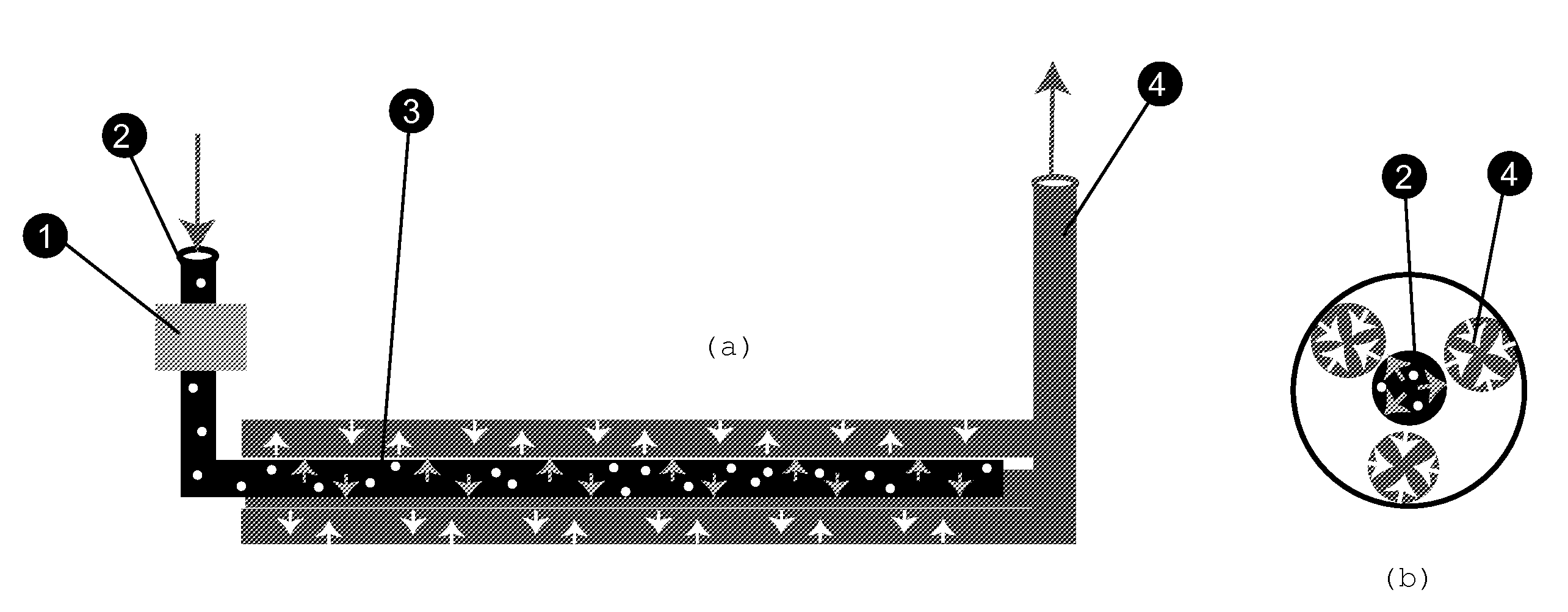Gas Scrubbed Perfusion Filter
a technology of perfusion filter and gas scrubber, which is applied in the direction of peptides, filtration separation, separation processes, etc., can solve the problems of low cell densities, high cost of operation, and product formation is often inhibited, so as to reduce the risk of contamination and cost. , the effect of low cos
- Summary
- Abstract
- Description
- Claims
- Application Information
AI Technical Summary
Benefits of technology
Problems solved by technology
Method used
Image
Examples
first embodiment
[0036]In a first embodiment, the instant invention discloses a filtration assembly comprising a perfusion filter capable of separating suspended cells from the media, a gas sparger and an arrangement of the two in such configuration that the outer surface of the perfusion filter is continuously bathed in the fine bubble created by the sparging filter. This allows continuous scrubbing of the external surface of the perfusion filter and keeping the surface clean at all time for long-term perfusion.
second embodiment
[0037]In a second embodiment, the instant invention discloses a design of a perfusion filter comprising a hard tubular structure with perforated surface, which is sheathed with a filter membrane of any type; the tubular structure provides the support to the filter membranes, which are often delicate and flexible.
third embodiment
[0038]In a third embodiment, the instant invention discloses the use of ceramic material structures such as tube, disc, ovoid or rectangle to serve as perfusion filter with pore sizes of 5 micron or less.
[0039]In a third embodiment, the instant invention disclose the use of ceramic material structures such as tube, disc, ovoid or rectangle to serve as sparging filter with pore size of 10 micron or less.
PUM
| Property | Measurement | Unit |
|---|---|---|
| Length | aaaaa | aaaaa |
| Pore size | aaaaa | aaaaa |
| Flow rate | aaaaa | aaaaa |
Abstract
Description
Claims
Application Information
 Login to View More
Login to View More - R&D
- Intellectual Property
- Life Sciences
- Materials
- Tech Scout
- Unparalleled Data Quality
- Higher Quality Content
- 60% Fewer Hallucinations
Browse by: Latest US Patents, China's latest patents, Technical Efficacy Thesaurus, Application Domain, Technology Topic, Popular Technical Reports.
© 2025 PatSnap. All rights reserved.Legal|Privacy policy|Modern Slavery Act Transparency Statement|Sitemap|About US| Contact US: help@patsnap.com


